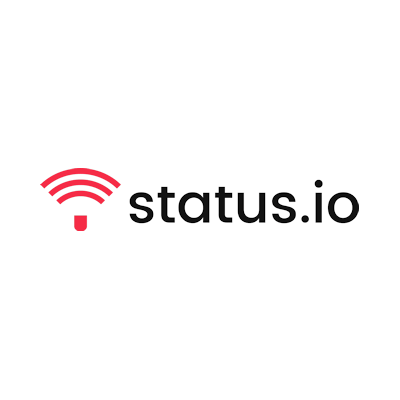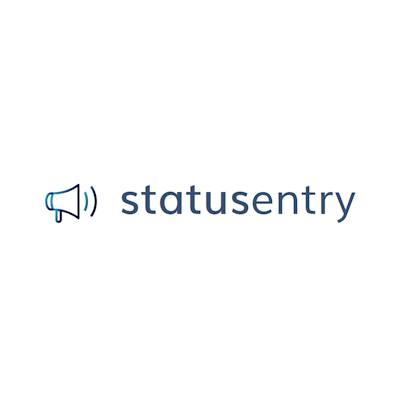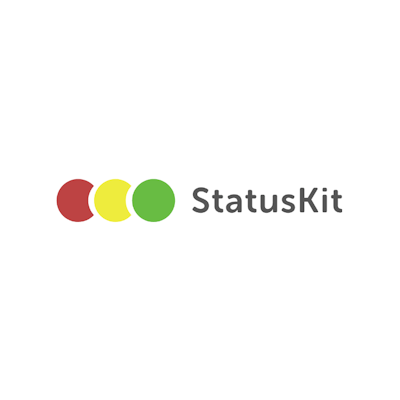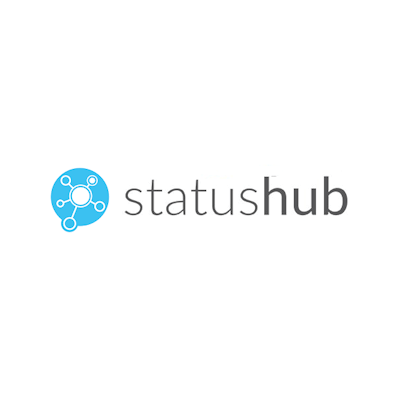Hosted Public Status Pages – a Must-Have for Every SaaS
Status pages have come a long way since their inception. They’re much more than just simple indicators. These days, they’ve become a critical aspect for companies embracing transparency. If you don’t want to be flooded with emails and phone calls from concerned customers during scheduled downtime, you must give public status pages a thought.
A public status page is simply a web-page that allows end-users to be aware of live updates, scheduled maintenance, or delays with respect to your website. They not only allow you to adopt a customer-centric approach, but also reduce support queries creating loyalty and trust among your customers. Especially, if you’re a SaaS company, believe us, your brand’s image, value, and trust among your customers will eventually increase if you will have a public status page.

There are some great status pages out there, and in this article, we’ll cover some important aspects related to them. We’ll also introduce you to some of the best standalone status page providers so you too can kick start your journey with them.
What makes a good status page?
The primary objective of a status page is to let users be aware of any activities at your end that might be disrupting the services. In order to effectively do this, there are certain parameters that need to be fulfilled. Let’s briefly discuss the must-have aspects of a good status page.
Effectively promote organizational transparency for end-users
The ultimate goal of most organizations is that there should be no communication gap with their customers. The end-users should be able to quickly digest what’s going on with the services or if there’s something wrong at their end. So, if your status page is rather complicated, it might end up intensifying the communication gap and you should switch to a more potent, easy to follow page.
Needs to have periodic written communication on the page
A public status page has a lot to offer than just a status of the service. It can be a complete communication platform to keep end-users updated on every minute detail, be it good or bad.
Shouldn’t breakdown irrelevant services to the users
Some status pages often disappoint customers by breaking down the services based on their interactions. This could be helpful for you, but confusing for your users. The breakdown shouldn’t overwhelm the end-users with irrelevant data which is of no use to them.
Should include post-incident data
If you want to enhance transparency, you should consider a public status page with post-incident annotations and updates. This could be a lifesaver if something goes wrong with the current data. Also, this could be beneficial for visibility and building customer trust.
Includes information metrics
Often businesses have benefitted from including metrics to status pages that may project real-time performance analysis with time. This historic information can help you boost your sales by showing off various technical metrics for your services.
Super Monitoring Public status pages
With so much to consider, crafting a perfect status page or getting it done from someone else can often consume a lot of time. Also, including too much can even dilute the primary purpose of the status page. We suggest you to leave it the experts.
At Super Monitoring, you not only get the best status pages generated for you, but we also offer a lot of cost-effective solutions specially crafted for your organization. And best of it all, you also get to customize your status pages for completely personalized experience.

Here’s a quick glance at the prominent benefits you get associating with us.
- Unlimited status pages per account: Your account comes with unlimited status pages facility that’s a lifesaver for most organizations. So, you don’t need to keep a track of how many pages you’ve already created with us, and thus, don’t need to filter the priority of your needs. Just buy a subscription plan that suits you the best and you’ll be able to create multiple public status pages without paying any extra amount.
- Deeply configurable: Each organization is unique and so should be their status pages. With us, you get complete freedom in configuring your status pages with our customizable page builder feature. You get complete control over various elements like colors, styling, and look. Adding more convenience, it’s built for all types of devices with a slick look and bouquet of features.
- Uptime and response time charts: With our status pages, you get all historic data in the form of time-based charts. You will be able to measure the total uptime for every service and component you define within the application. A real-time SLA reporting page will be published that will appraise your customer’s view overall and individual component uptime.
- Optional monitor details pages: This feature will allow you to convey additional information about your checks to your customers. If you turn on the feature, once a user clicks on a selected check, they will be redirected to a sub-status page that has required details.
- Branding: The custom CSS works a charm for organizations looking to add a personal touch to their status pages. You can even make it look like another page of your website or application.
- Custom sub domain or even domain: Not all organizations are happy with the default status page domain they get with most services. But with us, you get complete freedom to choose one and attach it to the status page.
- Custom status names: You can customize the status names as per your service terminology that best caters to your organization.
- Incident messages: You also get the liberty to publish incident communication as per your monitor. This is quite helpful in saving you from embarrassment in the event of a service outage.
Top 10 Providers of Standalone Hosted Status Pages
Even when you’ve crafted your perfect status page, getting it deployed and hosted is all together a different ball game. This might seem easy, but there are several technical terms to consider here. It’s often the best idea to hand over the hosting of your status pages to professionals.
For your convenience we’ve outlined the top ten hosting services for your standalones status pages:
1. Statuspage
This is one of the leading SaaS-based solutions used by leading names like Dropbox, Reddit, Cloudflare, and Square, to name a few. Not only does it enable you to minimize support queries and tickets, but also lets you manage subscribers directly and send consistent communication over various channels such as email, text, and much more. Also, you get the trust of Atlassian with this solution, and this means more security and user management options, like user permissions and Jira Software integration. If you’re looking for a potent incident management system for your business, Atlassian’s Statuspage is the way to go.
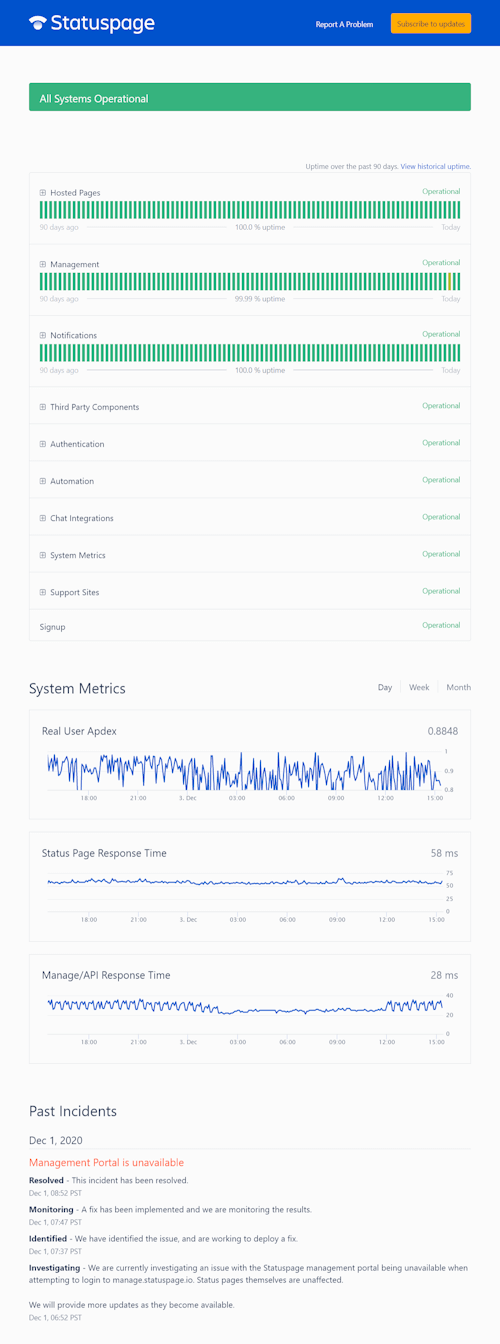

2. Status.io
A complete status platform built with simple yet feature-packed status pages, Status.io provides a fully customizable incident management process. Moreover, you can modify your status pages as per your brand flavor and add a personal touch. You can track incidents, schedule planned maintenances, and broadcast notifications to keep everyone in the loop during downtime. Also, they use highly available infrastructure to ensure that your status page is online and healthy even when your system is not. Hundreds of companies trust Status.io to be more transparent with their customers.
3. Sorry
You’ll never be sorry for your service downtime again once you get your status pages done with Sorry. This service is designed to provide the latest updates at the topmost priority on your status page. Featured with a unique single-click branding, it allows you to choose icons, logos, backgrounds, and colors with ease. It gives you complete freedom to personalize the page texts to compliment your brand. Also, it consists of a rock-solid infrastructure that isolates your status page from other websites and gives it a unique identity. Multi-lingual support makes it one of the few solution providers with a global presence. It also comes with an SSL certificate, REST API, and analytics for better insights.
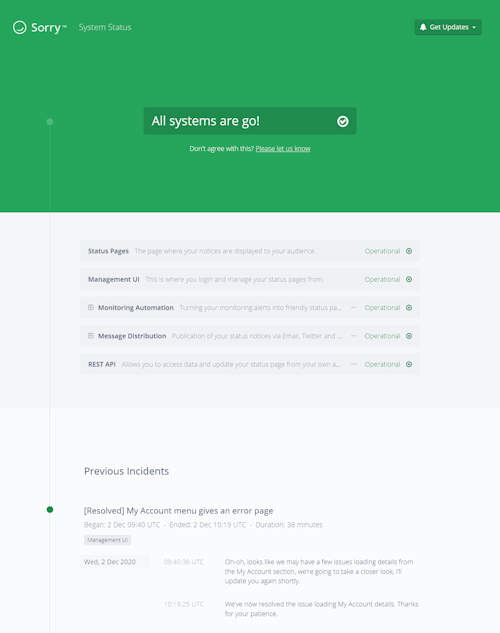
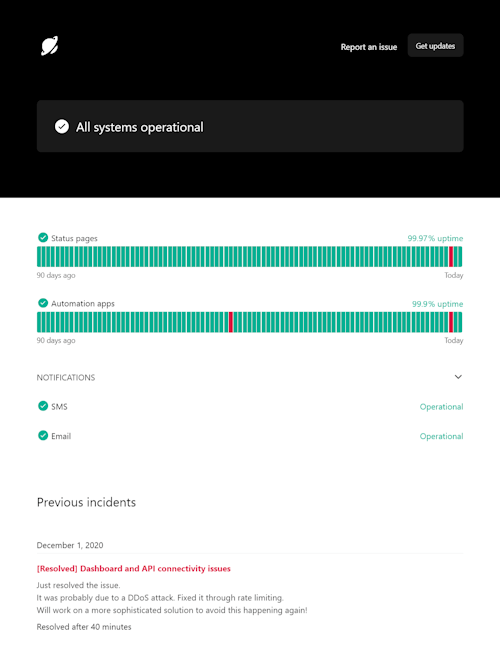
4. Instatus
A comparatively cost-effective and efficient incident management tool, Instatus comes with an array of features including SMS notifications, email notifications, GrapgQL, automatic SSL, custom HTML, and many more. With Instatus, you’ll be able to rebuild that long lost faith with your customers with effective communication on downtime and other incidents. Also, there’s no limit on the customer base when it comes to features like notification intimation that involve direct interaction.
5. PageFate
This is an open-source status page and incident management tool for APIs and services. With a user-friendly design, PageFate also comes with two-factor authentication via Google or Github for added security. Other than server issues, it also resolves DDoS or bug problems and stops the flood of support emails by letting your customers view the current incidents and receive updates on their own. With PageFate, you can set an example of great internal and external communication by turning uptime into a signal for excellence.
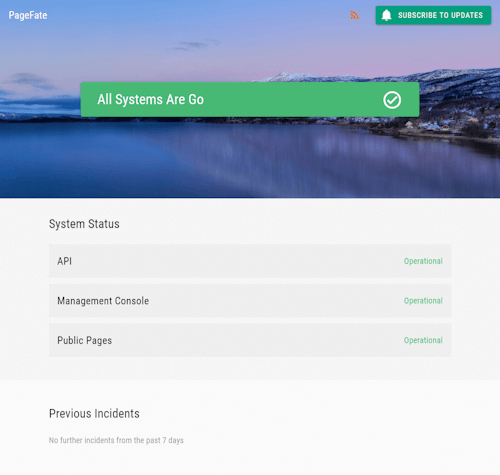
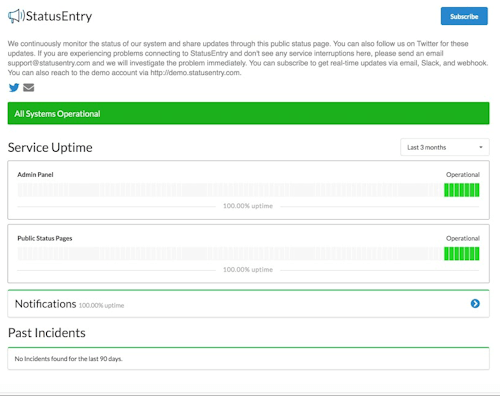
6. StatusEntry
An affordable version of hosted status pages for API, SaaS, and website businesses, StatusEntry understands the importance of availability in decision making. Therefore, the design is meant to show your service uptime history to potential customers and convince them how you monitor incidents. It not only notifies users when incidents happen but also communicates when your services are having an outage. It is an easy-to-use and open source solution.
7. StatusKit
A well know status page provider, Statuskit comes with a unique feature that allows your customers to subscribe to your status page via Email, Feed, Webhook, or Facebook Messenger. It also supports the use of its own Mailgun APL key. Its design is more human-centered than robotic automated status updates like others. An easy, one-glance status report fosters better communication for your services.
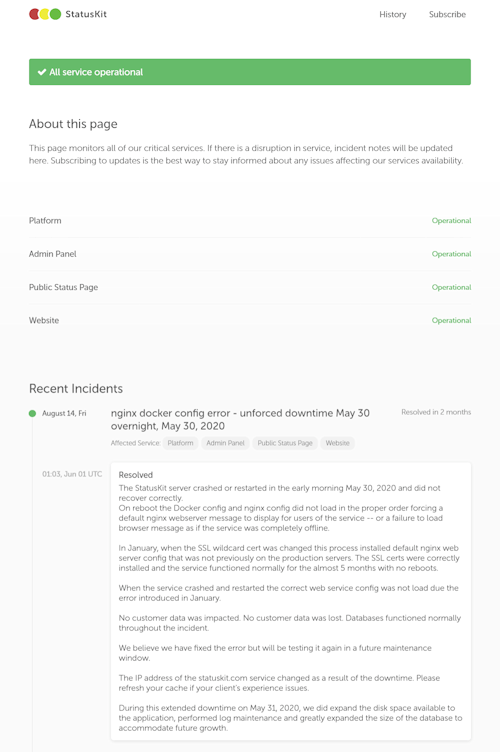
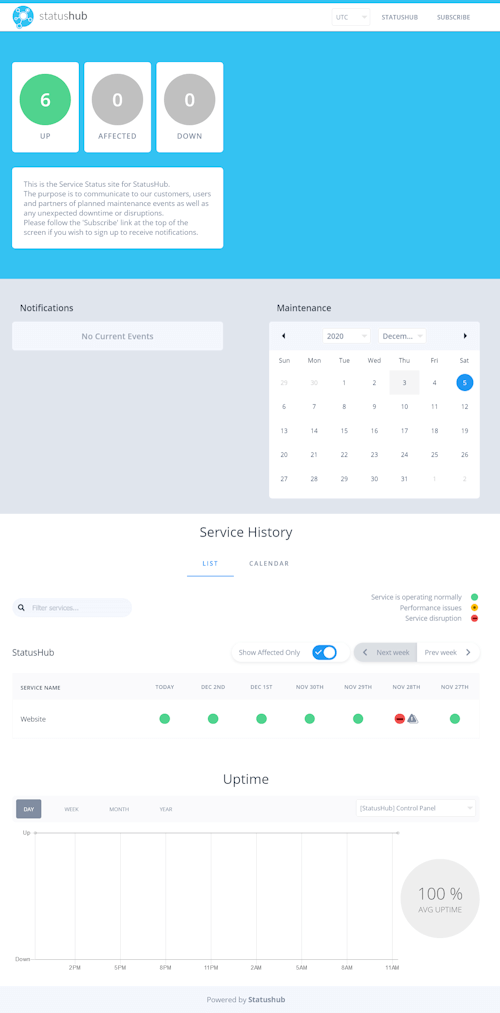
8. StatusHub
Mainly designed for IT incident and disruption communication, StatusHub effectively tackles communication challenges with your customers and reduces their impact on your business. Also, with the self-service interface feature, customers can choose how they want to receive the automated notifications through email, SMS, Twitter, Slack, and Microsoft Teams, etc. You’ll be able to create both internal and external hubs to communicate issues whether expected or unexpected. If you’re looking for a solution that reduces strain on your support team, StatusHub lets you achieve this with ease.
9. Cachet
Another open-source status tool, Cachet uses JSON API for effective communication of downtime and other maintenance activities. Equipped with an elegant and easy-on-the-eye dashboard, you can manually update the matrices about URL uptime, error, and latency to name a few. One benefit that you won’t find anywhere else is the option to post scheduled maintenance on the front-end, which goes in the form of a timeline. Also, it’s PHP-based so that you can display on VM with LEMP or LEMP stack, or go for PHP hosting such as A2 or Cloudways. You can experience all of this, by taking the live demo option available on their official website.
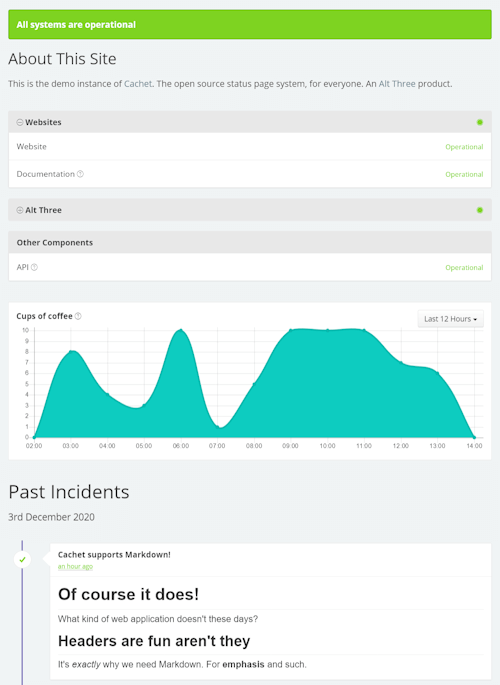
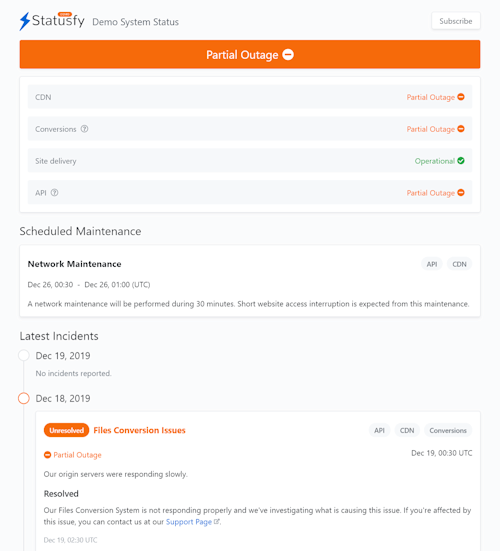
10. Statusfy
This status page system is complexly free and easy to use. Using Statusfy you can effectively write incidents with Markdown and generate HTML content. Some of the features also include reports, system definition, hosting flexibility, and support for PWA additionally. You will not face any problem in running it with Google Analytics and responsive layouts. It also comes with multi-language support and easy customization to match your brand requirements.
To Conclude
Public status pages have now become an end-user’s window into the team’s operations. Companies with their status pages defined are doing right for their users by building some transparency while mitigating frustration and offering support. So, the companies that want to focus on incident management and automation, status pages should be on their checklist item. They’ll see a huge gain in terms of customer satisfaction and cost reduction.



